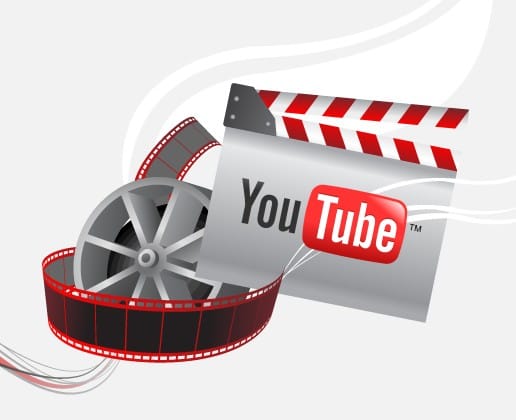Video marketing success isn’t just about going viral, though you’re probably not going to complain if that happens! It’s about a whole lot more – from building a loyal following or fan base, to educating and informing your customers. If you do your planning and you follow best-practice guidelines, your video marketing could propel you into stardom.
But really, video marketing is an excellent form of content marketing. It’s engaging, it’s easy to measure, easy to share and it’s a medium that allows you to communicate information fast.
A few reasons to do video marketing:
- Increase brand awareness
- Create an emotional connection with your target audience
- Improve user engagement
- Linkbuilding
- Search Engine Optimisation (SEO)
- Increase your online web presence
- Improve conversions
If you know what you want your video/series of videos to accomplish, you can go about planning in such a way that you are able to easily achieve your goal.
Before you get stuck in, why not take a moment to print off our ‘video marketing planner’. This way you’ll be able to jot down a few ideas as you read.

In this post I’m going to walk you through creating a video that has the potential to go viral and ultimately, that will increase conversions, leads or ‘product interest’ (even if that ‘product’ is you!). If you’ve got some of your own ideas, or if you think I’ve missed anything at any stage in this guide, please drop me a line on Twitter @XanthosDigital.
Unfortunately I cannot MAKE your video go viral (that takes a bit of luck too), I can only offer insights into the videos that have gone viral, and provide you with tips and best practice guidelines that will increase the likelihood of this happening. What you can be certain of is the following: video marketing will increase your online web presence, it will improve your brand awareness and it will help improve your website’s search engine optimisation.
We’ll begin by taking a look at the statistics that make online video such an appealing marketing medium, before moving onto what you should put in your videos, where you should upload them, how you should optimise them and how you should market them.
Why online video is worth the time
A cursory glance at YouTube’s own ‘Press Room’ statistics should give you a better idea of the power of video as a means of online communication. I’ve copied out the ones that had the biggest impact on me:
- Each month, over 800 million unique users visit YouTube
- Over 4 billion hours of video are watched each month on YouTube
- 72 hours of video are uploaded to YouTube every minute
- 70% of YouTube traffic comes from outside the US
- YouTube is localized in 43 countries and across 60 languages
- In 2011, YouTube had more than 1 trillion views or around 140 views for every person on Earth
Here’s the video summary:
Learn by example – who uses video to great success?
Rather than just giving you the top 10 list of ‘viral marketing videos’, I’ve picked a few that I feel are relevant to both B2B and B2C companies. They are listed in order of views (highest to lowest).
Examples of B2B video marketing:
- Corning – A day made of Glass…Made possible by Corning (21,012,584 views)
- Grasshopper – The new Dork – Entrepreneur State of Mind, and Entrepreneurs’ can change the world (1,348,121 views)
- VeriSign – CartWhisperer – World Premier (1,223,025 views)
- Serena Software – Just @#$% It!! What are they saying (1,197,551 views)
- Pazazz – Printing’s Alive (248,475)
- Cisco – Hackers of Troy – Cisco Systems (156,988 views)
- Rand Fishkin’s ‘Whiteboard Friday’ Updates (Sorry, had to throw that one in – the man just has too much useful advice and such respect in the SEO field. This is a good example of using video to inform, train and cement yourself in your field as an industry expert.)
- And a very funny marketing video from one of our own clients, IT Governance.
Examples of B2C video marketing:
- Evian – Evian Roller Babies (views: 61,827,546)
- Old Spice – Pretty much any Old Spice video will do (views 44,378,064)
- T-mobile – The T-Mobile Dance (views: 37,205,007)
- Dove – Evolution (views 15,626,863)
- BlendTec – Will it Blend – iPhone (views: 11,599,896)
- Smirnoff – Tea Partay (6,197,240 views)
- Ikea – Herding Cats (views 3,343,535)
Planning video content
Before you start planning your content, take a look at the video below – 5 things every presenter needs to know about people. It’s incredibly interesting if you want to know a little bit more about how we process video differently to other types of media.
Now that you know a little bit more, hang on a few more seconds. For this section I do strongly suggest printing our ‘video marketing planner‘ or creating your own rough outline or storyboard.
I suggest starting out by creating a list of the things you want your video to achieve (after all, how will you measure its success if you don’t do this? You will also need to decide what type of video you are creating: an interview, a slideshow, a tutorial, etc. Don’t forget to think of what your audience might like. What age are they? Are they men, women or a mix? What types of videos do they typically watch? What makes them laugh? What do they share…do your research.
Once you’ve decided and defined how you will measure success, begin planning the content. Either ‘storyboard’ it or make an outline of the scenes you are going to shoot, a list of the questions you are going to ask the person you will interview, or the things you will discuss.
Above all, my advice to you is: create valuable content. Don’t waste people’s time. If you’re doing video marketing for the sake of, you’re better not doing it at all. The only content that will get shared is content that makes a difference and it doesn’t matter what medium we’re talking about – blog posts, infographics, video, you name it. Just keep it real and create from the heart.
If possible, try to mention the name of the channel as early as possible in the video (I’m thinking once again of Rand Fishkin’s Whiteboard Friday videos. He always manages to get the name in there!). This is a good way to remind people that you’ve actually got a channel, that they are not just watching a one-off video.
Finally, plan your call to action. How will you end your video? What action do you next want the user to take. Do you want them to subscribe to your YouTube channel? Do you want them to subscribe to your newsletter? Visit your website? What?
Creating and editing your video
Obviously if you can afford to use a video marketing agency or a digital marketing agency that offers video services, I would strongly suggest you do this, especially if you are creating an advertisement. If you’re simply creating a photo slideshow, you can probably do it well enough yourself.
Here’s a list of some free video tools I suggest looking into:
- Windows Movie Maker – this tool is great for importing and editing slideshows and videos. It will also allow you to edit the soundtrack and to add a theme. Great for sharing as well.
- VideoSpin – a great tool if you want to quickly mix videos, photos and music.
- VideoThang – good for cutting clips from your video, zooming in, creating nice transitions and dropping captions and titles in. A nice, free editor.
- If you want more functionality, good paid services to think of using include: CyberLink and PowerDirector.
Optimising your YouTube channel
This will not only help you get found online, but will help to brand your company/yourself/your product.
- Upload a good quality avatar that reflects you or your company. After all, this is how people will recognise you across the web.
- Brand your channel page. Making sure that your YouTube channel either reflects your business or serves a particular purpose is important. Don’t leave it blank, if you can help it, do at least a little tailoring.
- Sort your videos into ‘playlists’ so as to encourage people to watch all of the videos in a list. This will also make your channel easier to navigate. The nice thing about playlists is that like videos, they too have their own title and description, and they show up in YouTube’s results separate to individual videos.
Uploading your video
Now you’ve got a video that’s ready to share, you’re going to need to upload it. If you’re using YouTube, it’s a really simple process. There are a few things you can do to increase the chances of your video getting found both in YouTube and in Google searches.
Optimising your online video:
- Every video should have its own unique title and this tile should include keywords that your audience will be searching for.
- Your video should also include a description or summary. This summary should be interesting enough to make someone want to watch the video, and it should contain relevant keywords. If possible, try to include the link to your website at the top of your description. this way, people will be able to quickly and easily visit your site if they are interested in you or your company.
- If you can, think of uploading a captioning script. This is a script of your video’s content and is content that is often indexed by search engines.
- Use tags that are relevant to the video, that contain the keywords you want to get found for, and your own name as well as the name of your YouTube channel.
Marketing your video
Promoting your video is done in much the same way as you would any other type of online content. If you read our guide to content marketing with infographics, many of the same strategies apply.
- Upload your video to a video hosting service. This might be: YouTube, Vimeo, Metacafe, DailyMotion or Viddler. Whatever it is, make sure you’ve done a little bit of research on how to make the most out of the platform/s you intend to us. Each will have its own quirks.
- Make sure your YouTube channel is integrated with your website. If you don’t SHOW people you’ve got a channel, they won’t know you’re on it. Make their life simple.
- Embed your video in a blog post on your own website.
- Write a guest blog post for another website and embed your video into the guest blog post (of course, you’ll have to make sure it’s relevant to the topic you’re writing about!)
- Most your video to Pinterest. Read the Reel SEO video marketing guide if this is something you’re interested in.
- Make sure your video contains a call to action so as to prompt your viewers to take the next step.
- On your own website, optimise the blog post/page that your video is embedded on. This should be optimised about a subject that relates to your video/that contains similar keywords.
- Share your video on Facebook, Twitter, LinkedIn or whatever other social network you use.
And finally, if you want to know more about video marketing strategies, take an hour of time out and watch Google’s guide to online video:
Monitoring and tracking the success of your video
Apart from making use of YouTube’s in-built video analytics tool, pick a few areas you can monitor that will tell you whether or not your video has done what you wanted it to.
Things you might measure include:
- Number of views
- Greater search engine presence
- Channel subscribers
- Number of likes/shares
- User engagement
- Increase in inbound links
- Increase in social media following
- Click-through-rate
- Lower bounce rate
You could also consider setting up ‘event tracking’ so that you can monitor how many people are watching your video from your blog post.
How can we help?
At Xanthos we can help get you get started with video marketing. We can integrate your YouTube channel with your website and come up with a video marketing plan that complements your content marketing strategy. If you want us to create a video for you, we can also help. Find out more about our content marketing services by getting in touch.








